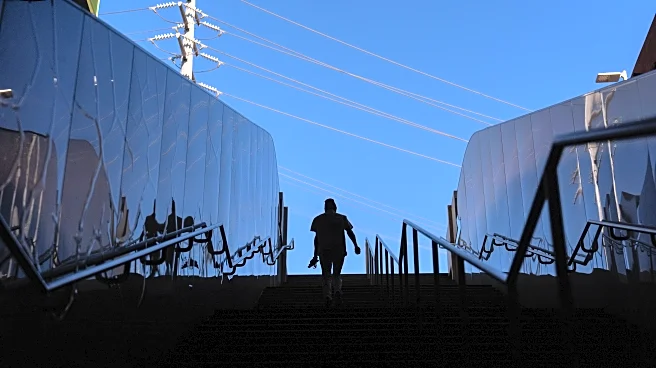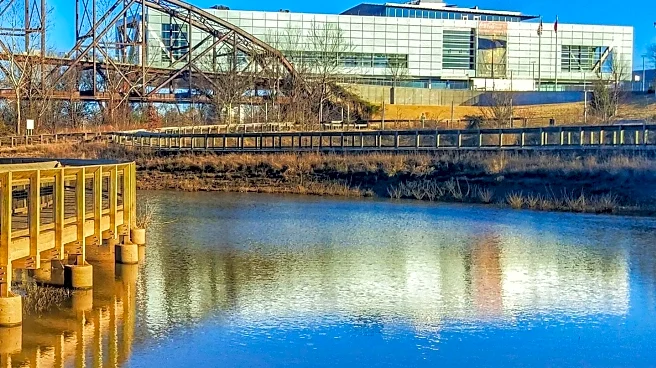What's Happening?
Norwich City Council has decided to allocate an additional £1 million towards the redevelopment plans of its Grade II listed City Hall. This decision follows an initial expenditure of nearly £1 million on proposals
that may include expanding the building to incorporate a hotel or offices. The council aims to modernize City Hall, which opened in 1938, to mitigate running costs of £2 million a year and improve energy efficiency. The plans include new public areas and a Civic Living Room to provide space for meetings, events, and exhibitions, while improving accessibility. The council hopes the reimagining of City Hall will generate between £53 million and £104 million in economic benefits. However, developing a hotel or offices at the rear of the site is not currently viable without significant public sector support.
Why It's Important?
The redevelopment of Norwich City Hall is significant as it aims to preserve a historical building while modernizing it for future use. The council's investment could lead to substantial economic benefits for the city, enhancing its cultural and heritage value. The project also addresses the need for improved energy efficiency and reduced operational costs, which are crucial for sustainable urban development. However, the opposition has raised concerns about the transparency of the plans, emphasizing the importance of public consultation and involvement in decisions affecting community assets.
What's Next?
Norwich City Council plans to conduct a comprehensive public consultation in the new year to gather input from residents and stakeholders. This consultation will be crucial in shaping the final redevelopment plans and ensuring community support. The council will also focus on improving the current building to increase its public use, aiming to make City Hall more accessible and engaging for the community.
Beyond the Headlines
The redevelopment of City Hall highlights broader issues of urban planning and heritage conservation. Balancing modernization with the preservation of historical sites is a challenge faced by many cities. The project could set a precedent for how local governments approach similar initiatives, emphasizing the importance of community involvement and transparent decision-making.












